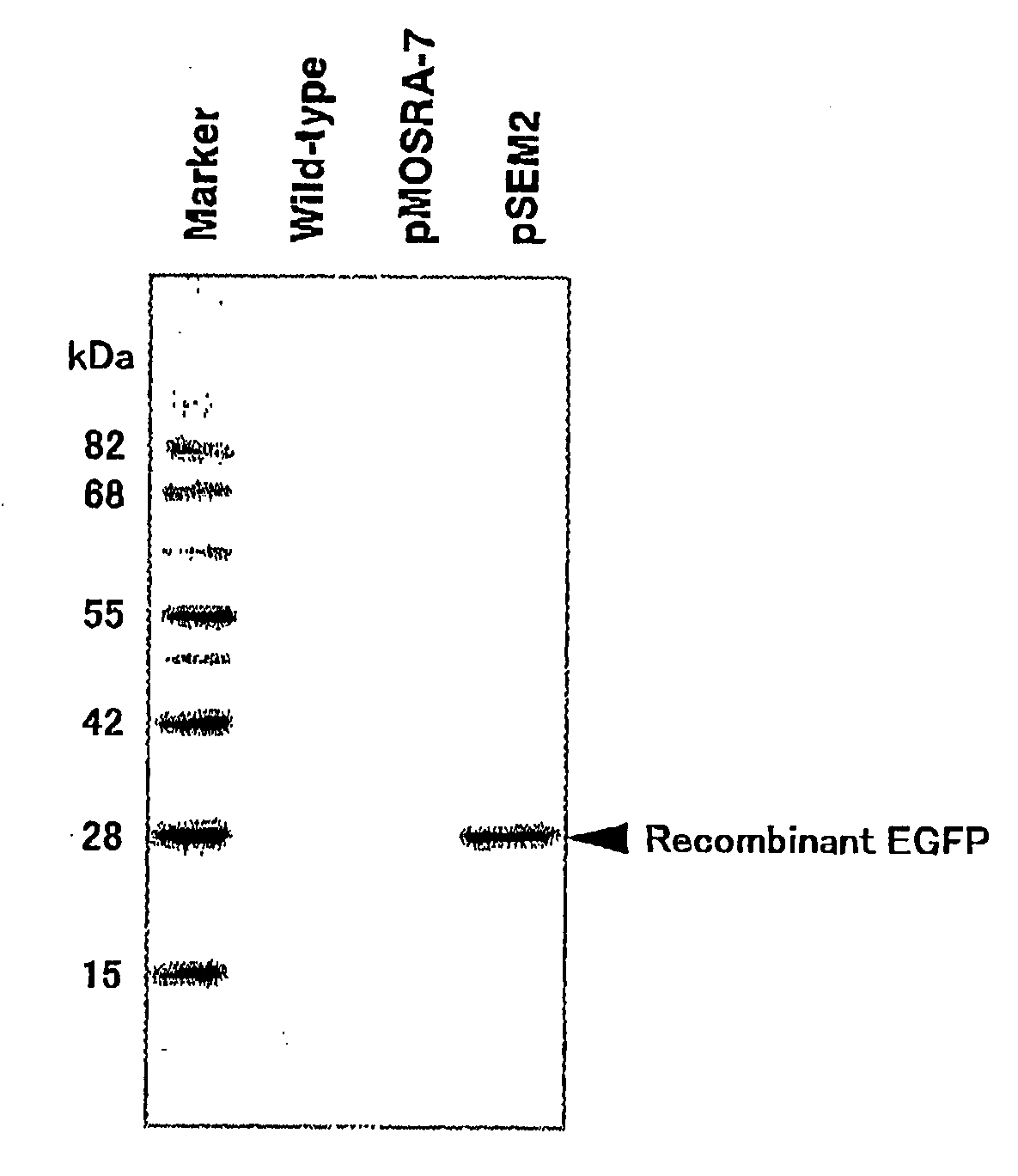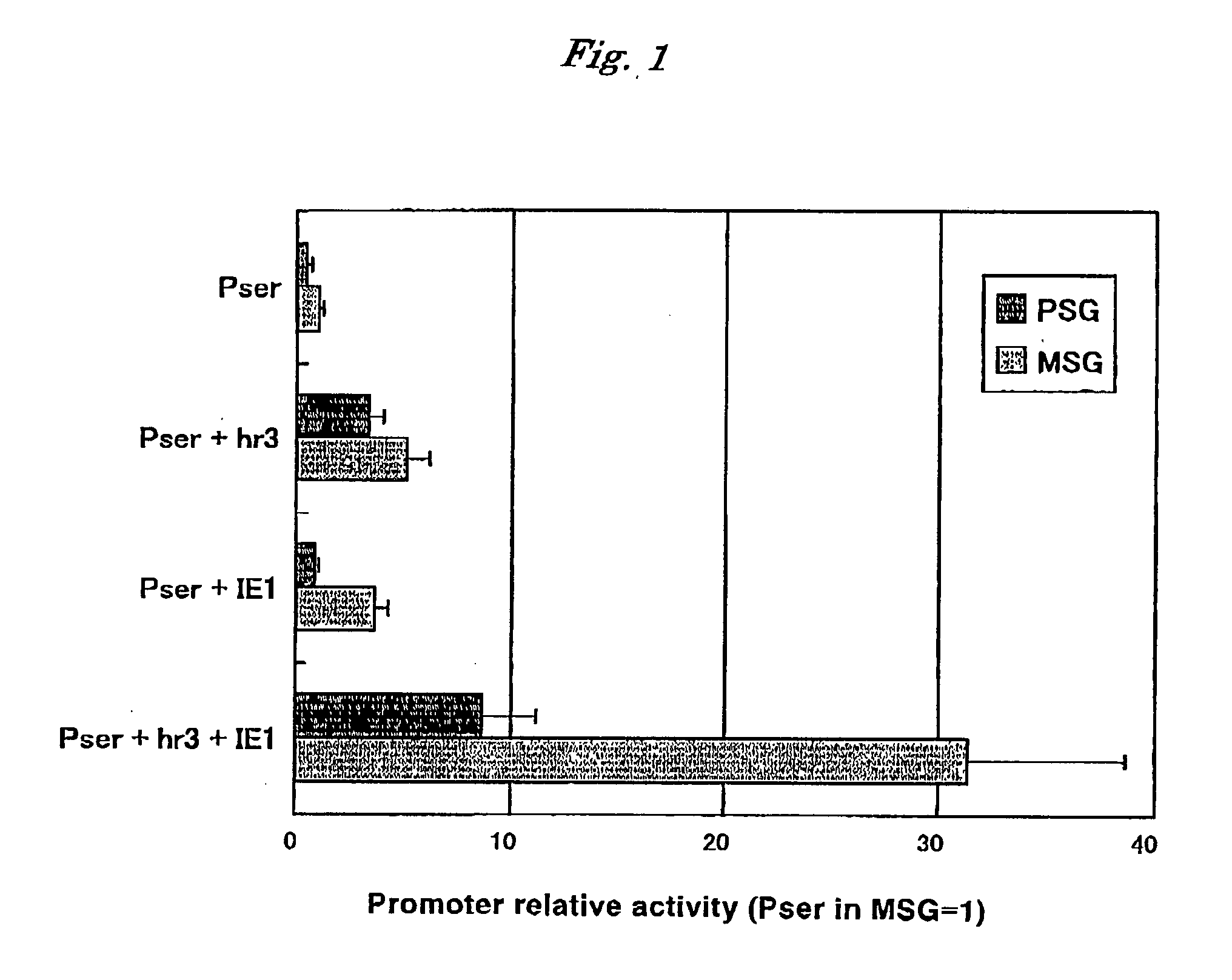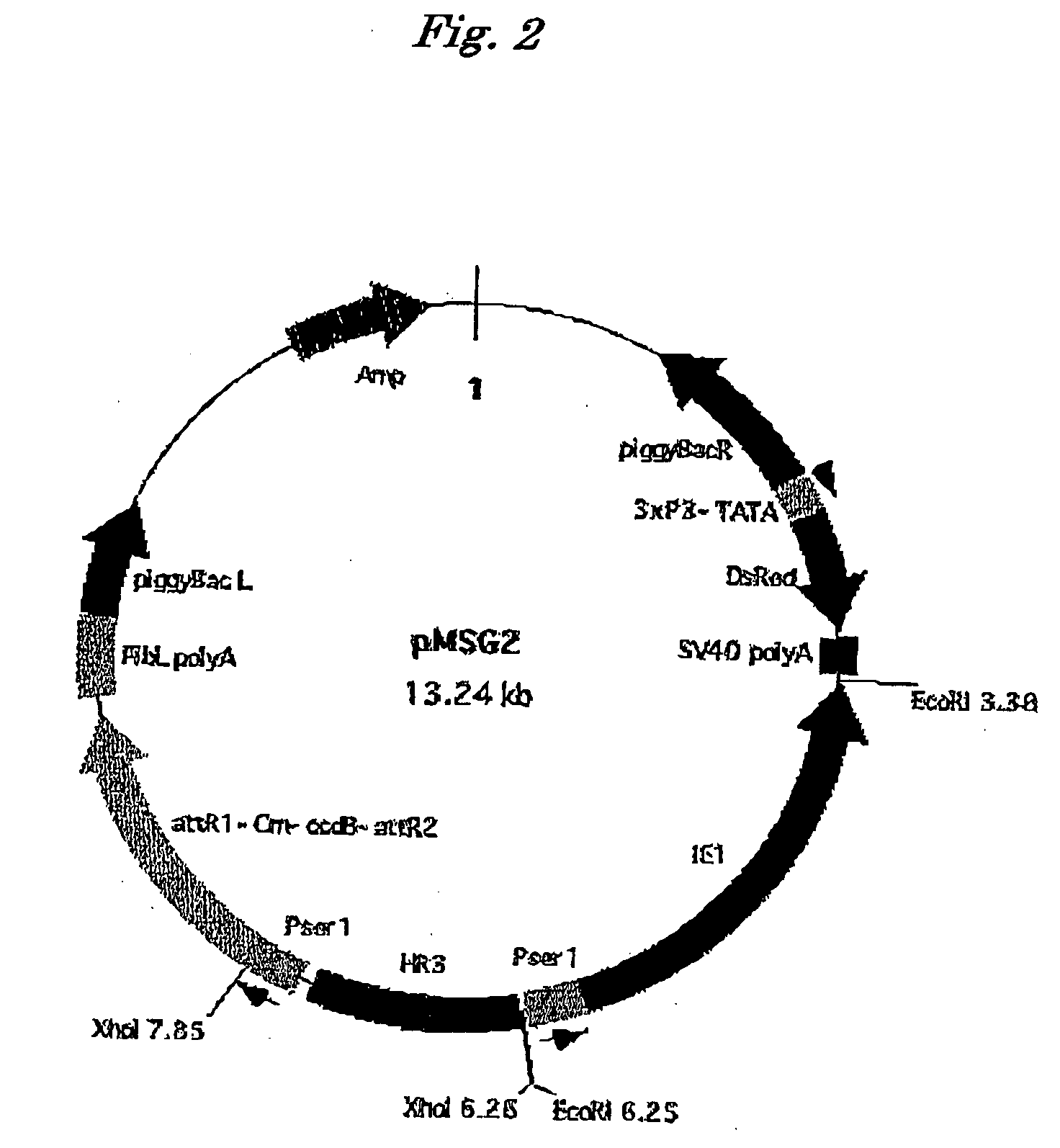Polynucleotide for Producing Recombinant Protein in Silkworm
a technology of recombinant protein and polynucleotide, which is applied in the field of polynucleotide for producing a recombinant protein in silkworm, can solve the problems of difficult to completely dissolve the fibroin fibers, the steric structure of the recombinant protein may be denatured, and the extraction and isolation of the recombinant protein from the mixture of the recombinant protein and the cocoon are not always
- Summary
- Abstract
- Description
- Claims
- Application Information
AI Technical Summary
Benefits of technology
Problems solved by technology
Method used
Image
Examples
example 1
Verification of Effect on Promotion of Activity of Promoter of Sericin 1 Gene by hr3 and IE1
[0042]The following three kinds of vectors were prepared and an effect of promoting transcription activity of silkworm sericin 1 promoter by hr3, which is one of hrs of BmNPV, and IE1 of BmNPV was investigated utilizing a temporary gene expression system using a gene gun.
[1] Vector Having Firefly Luciferase Gene at Downstream of Sericin 1 Promoter
[0043]A DNA fragment corresponding to the region of −304˜+20 when a transcription initiating point of silkworm sericin 1 gene was regarded as +1 was obtained by PCR using genome DNA extracted from adult silkworm abdomen as a template. The primers used were 5′-GCTAGCAGTCGAATTTCGACTACTGCG-3′ (SEQ ID NO: 2) and 5′-GCTAGCCCCGATGATAAGACGACTATG-3′ (SEQ ID NO: 3) and an NheI site was added to each 5′-end. The resulting PCR product was cleaved with NheI and then inserted into an NheI site of firefly luciferase reporter vector pGL3-basic (Promega).
[2] Vector ...
example 2
Preparation of Vector for Producing Transgenic Silkworm
[0049]A double-strand oligonucleotide wherein an oligonucleotide 5′-AATTCCTTAAGCTCGAGTCGCGA-3′ (SEQ ID NO: 10) phosphorylated at 5′-end and an oligonucleotide 5′-AATITCGCGACTCGAGCTTAAGG-3′ (SEQ ID NO: 11) were annealed was prepared. The double-strand oligonucleotide has restriction enzyme-recognizing sequences for AflII, XhoI, and NruI and both ends have a structure linkable to an EcoRI site. The two-strand oligonucleotide was inserted into an EcoRI site of pBac[3xP3-DsRed / pA] (Nat. Biotechnol. 21, 52-56 (2003)), which is a piggyBac vector having a red fluorescent protein (DsRed) gene expressing in eyes and nerve systems, as a marker gene to thereby insert the restriction enzyme-recognizing sequences for AflII, XhoI, and NruI into the pBac[3xP3-DsRed / pA] vector.
[0050]A DNA fragment comprising sericin 1 promoter and IE1ORF was amplified by PCR using the vector [3] of Example 1 (vector having ORF of IE1 at downstream of hr3 and se...
example 3
Production of Transgenic Silkworm Secreting Green Fluorescent Protein into Sericin Layer
[0053]Using a primer containing a sequence encoding a signal peptide of human calreticulin (5′-CACCATGGTGCTATCCGTGCCGTTGCTGCTCGGCCTCCTCGGCCTGGCC GTCGCCGTGAGCAAGGGCGAGGAG-3′: SEQ ID NO: 16) and a primer containing a termination codon of EGFP (5′-TTTACTTGTACAGCTCGTCCATGC-3′: SEQ ID NO: 17), a cDNA of EGFP to which a sequence encoding the signal peptide of human calreticulin was added to 5′-end was prepared by PCR using pEGFP (Clontech). The resulting cDNA fragment was incorporated into pENTR vector (Invitrogen) and inserted into pMSG2 utilizing the Gateway system to construct a vector (pSEM2) expressing secretory EGFP.
[0054]After pSEM2 was purified by cesium chloride ultracentrifugation, pSEM2 and pHA3PIG (Nat. Biotechnol. 18, 81-84 (2000)) which was a helper plasmid were mixed so that the amounts of the plasmids were 1:1. Furthermore, after ethanol precipitation, the precipitate was dissolved into...
PUM
| Property | Measurement | Unit |
|---|---|---|
| concentration | aaaaa | aaaaa |
| molecular weight | aaaaa | aaaaa |
| insoluble | aaaaa | aaaaa |
Abstract
Description
Claims
Application Information
 Login to View More
Login to View More - R&D
- Intellectual Property
- Life Sciences
- Materials
- Tech Scout
- Unparalleled Data Quality
- Higher Quality Content
- 60% Fewer Hallucinations
Browse by: Latest US Patents, China's latest patents, Technical Efficacy Thesaurus, Application Domain, Technology Topic, Popular Technical Reports.
© 2025 PatSnap. All rights reserved.Legal|Privacy policy|Modern Slavery Act Transparency Statement|Sitemap|About US| Contact US: help@patsnap.com



